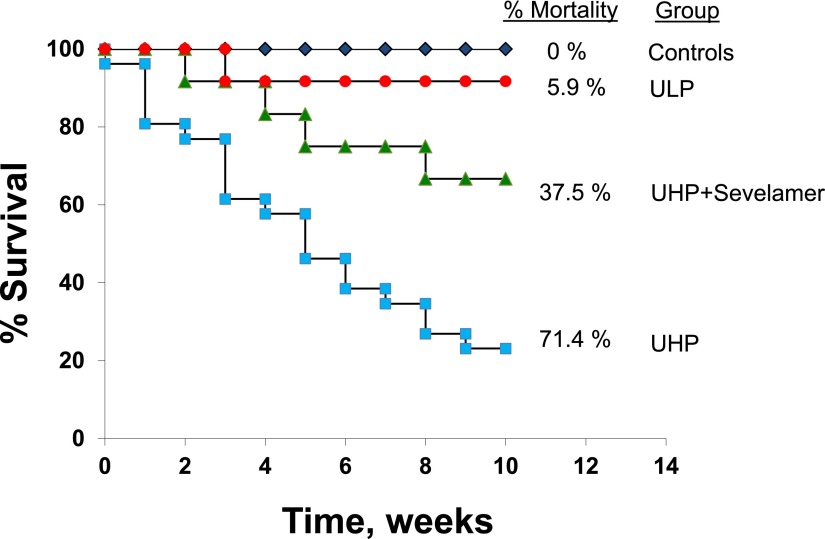Figure 3.
Phosphate restriction reduces mortality in uremic rats with established vascular calcification. Uremic rats were fed a high-phosphate diet (1.4%) for 3 months. They were then divided into three groups that were fed the high-phosphate diet (UHP), a low-phosphate diet (ULP; 0.1%), or the high-phosphate diet to which 4% of the phosphate binder sevelamer carbonate was added (UHP + Sevelamer). Tracking of mortality was begun at this point and continued for an additional 3 months. Normal rats fed UHP served as controls. Kaplan–Meier analysis shows the mortality and survival rates during the final 3-month period. There was a 71.4% mortality rate for uremic rats fed the UHP; of 35 rats initially placed in this group, only 10 survived. Conversely, rats that were switched to the ULP experienced a mortality rate of only 5.9% (16 of 17 rats that started in this group survived; P<0.001 versus UHP). Rats fed UHP + Sevelamer had a mortality rate of 37.5% (five of the original eight rats survived; P=0.07 versus UHP and P<0.05 versus ULP). Modified from reference 89, with permission.

